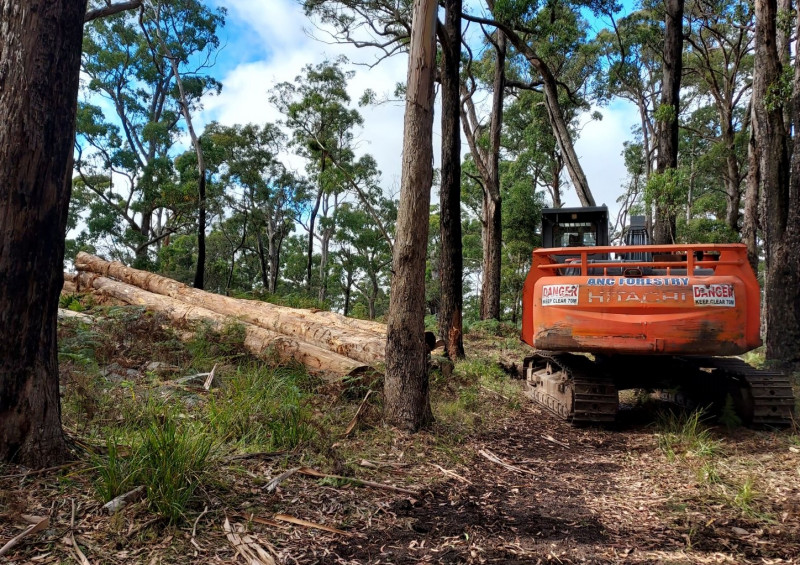
The Victorian National Parks Association is calling for greater oversight of salvage logging, holding concerns that crucial habitats are being decimated under the guise of fire mitigation.
The VNPA lodged complaints with the Victorian Ombudsman this month over recent activities at the Cobaw State Forest near Woodend, which is covered by a Special Protection Zone and is earmarked to become a conservation park.
“Fire mitigation works, which look essentially the same as salvage logging, have recently commenced in the Cobaws following the 2021 windstorm event,” VNPA nature conservation campaigner Ben Gill said.
“The Department of Energy, Environment and Climate Action has engaged VicForests to carry out these works and the salvaged timber will be sold or be used for commercial purposes.”
In March 2022, the VNPA became alarmed by VicForests’ plan to undergo broadacre large-scale operations in the Cobaws.
The ranges have not been commercially logged recently, have strong conservation values and when surveyed had insignificant storm damage. The last logging in the Cobaws was in 1999.
“After VNPA questioned the need for this work, DEECA management stated that the final operation would be limited to five tracks: Pinnacle Track, Mansfield Track, Devanney Track, Ridge Road and Croziers Track,” Mr Gill said.
“However, VNPA staff and local conservationists then discovered on January 31 a heavy log handling machine operating deep in the forest, in areas with limited obvious windfall damage.
“This salvage work that is not being carried out on any of the designated tracks has not been explained.”
Mr Gill said this case highlighted the need for an independent regulator to step in when fire mitigation works occurred in state forests.
“Commercial native forest logging appears on hold across most of the state except salvage logging in storm damage areas, or for so-called fire mitigation, which can be done without following even the basic normal forest oversight rules,” he said.
“Large logs are being taken and trucked off for commercial use and forest contractors from across the state let loose in places they would have been not allowed otherwise.
“Whether the damage is a fire hazard or not, there should still be intensive surveys for threatened flora and fauna regardless.
“The Office of the Conservation Regulator has confirmed that they have no jurisdictional oversight in works conducted under fire mitigation rules.
“We are probing and questioning the department about its fire mitigation practices and getting little transparency in return.
“An independent regulator with powers should be the primary watchdog, not grassroots organisations like ours.”
The Cobaws provide a refuge for native flora and fauna including the brush-tailed phascogale. This state-listed vulnerable species relies on the presence of fallen timber to forage for insects.
“When timber is removed from their habitat, habitat values are lost,” Mr Gill said.
“We know there have been several recent sightings recorded by citizen science projects in the Cobaws very close to the proposed cleanup areas.”







